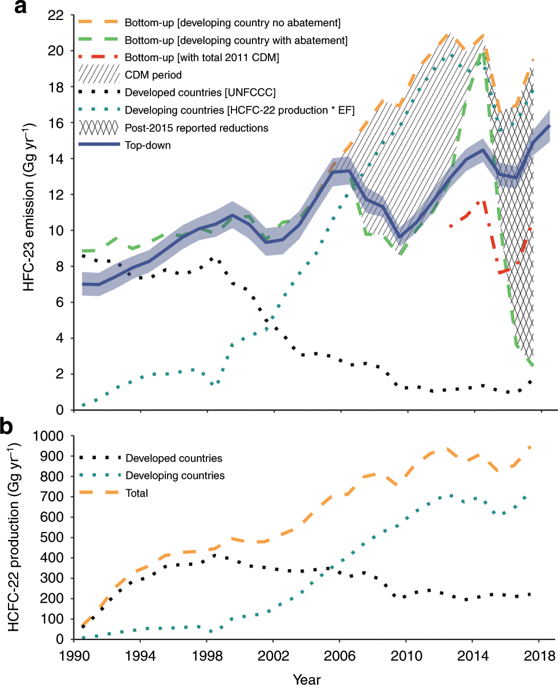当前位置:
X-MOL 学术
›
Nat. Commun.
›
论文详情
Our official English website, www.x-mol.net, welcomes your feedback! (Note: you will need to create a separate account there.)
Increase in global emissions of HFC-23 despite near-total expected reductions.
Nature Communications ( IF 16.6 ) Pub Date : 2020-01-21 , DOI: 10.1038/s41467-019-13899-4 K M Stanley 1, 2 , D Say 1 , J Mühle 3 , C M Harth 3 , P B Krummel 4 , D Young 1 , S J O'Doherty 1 , P K Salameh 3 , P G Simmonds 1 , R F Weiss 3 , R G Prinn 5 , P J Fraser 4 , M Rigby 1
Nature Communications ( IF 16.6 ) Pub Date : 2020-01-21 , DOI: 10.1038/s41467-019-13899-4 K M Stanley 1, 2 , D Say 1 , J Mühle 3 , C M Harth 3 , P B Krummel 4 , D Young 1 , S J O'Doherty 1 , P K Salameh 3 , P G Simmonds 1 , R F Weiss 3 , R G Prinn 5 , P J Fraser 4 , M Rigby 1
Affiliation

|
Under the Kigali Amendment to the Montreal Protocol, new controls are being implemented to reduce emissions of HFC-23 (CHF[Formula: see text]), a by-product during the manufacture of HCFC-22 (CHClF[Formula: see text]). Starting in 2015, China and India, who dominate global HCFC-22 production (75% in 2017), set out ambitious programs to reduce HFC-23 emissions. Here, we estimate that these measures should have seen global emissions drop by 87% between 2014 and 2017. Instead, atmospheric observations show that emissions have increased and in 2018 were higher than at any point in history (15.9 [Formula: see text]). Given the magnitude of the discrepancy between expected and observation-inferred emissions, it is likely that the reported reductions have not fully materialized or there may be substantial unreported production of HCFC-22, resulting in unaccounted-for HFC-23 by-product emissions. The difference between reported and observation-inferred estimates suggests that an additional ~309 Tg [Formula: see text]-equivalent emissions were added to the atmosphere between 2015 and 2017.
更新日期:2020-01-22



























 京公网安备 11010802027423号
京公网安备 11010802027423号